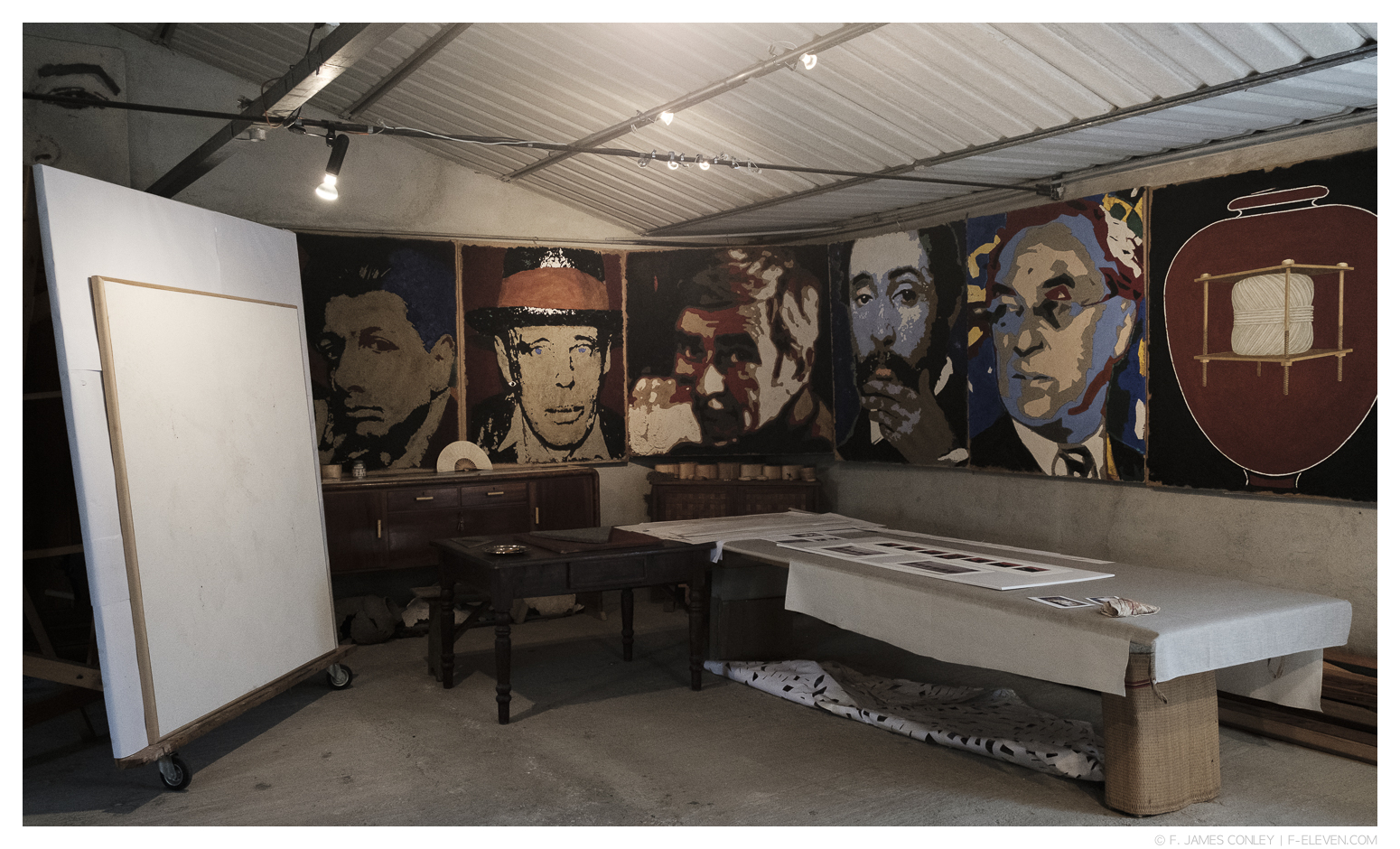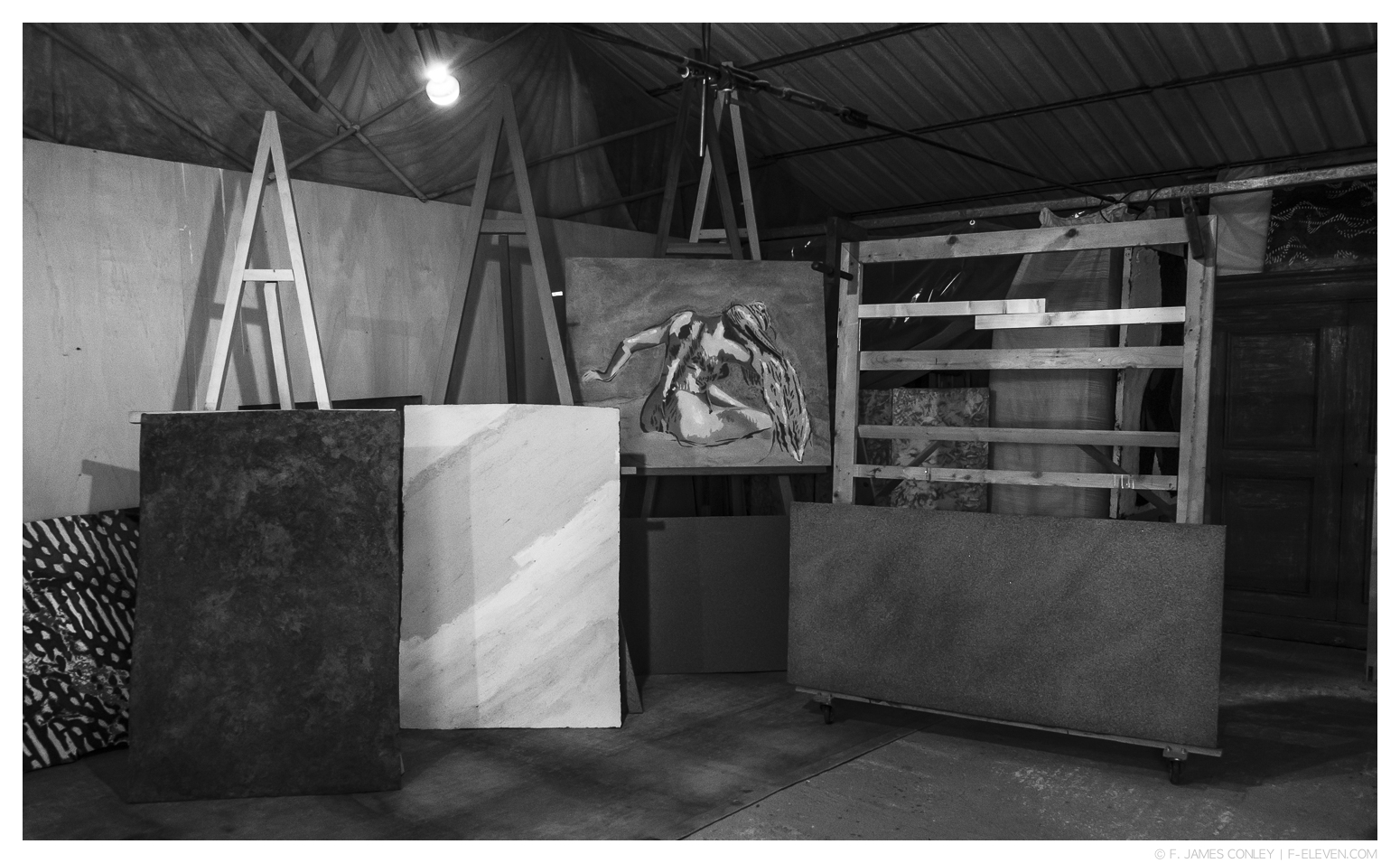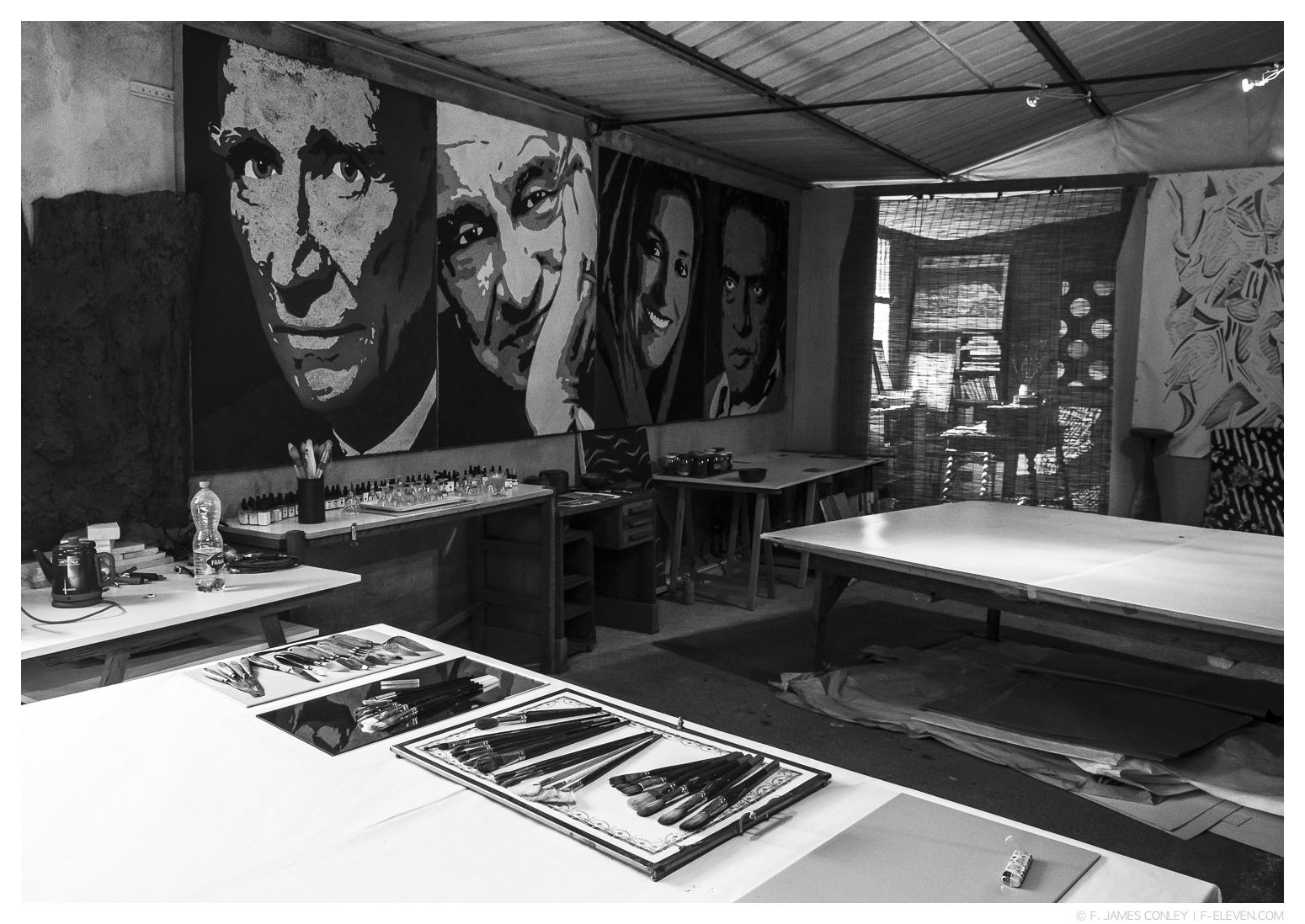An artist’s true studio is in the mind. It’s the echo of thoughts, fed by the senses, which forms the ideas destined to become shareable expressions. To do most of the work, an artist needs nothing more than the mind. But when it comes time to make the idea shareable, it’s necessary to have the tools and physical space of creation.
Make no mistake, however: the studio is the studio. An artist’s thoughts have equivalent status with the space created to make those thoughts tangible. The order of thoughts is not distinguishable from the arrangement of space. Both are necessary, and neither is sufficient.
As a photographer, my studio is more discrete than that of many artists. The first external contact of my thoughts with the world is through the viewfinder. Shielded from anyone’s sight other than my own, it’s still a very private place in which to work.
Next comes some version of a darkroom. Whether that’s a physical space in which I develop film, or a computer program in which I make adjustments, there’s almost always a door I can shut. It’s still a very private place to work, with the thoughts in my head not really going beyond arms’ reach.
It’s only when I have a final product—be it a digital image, a print, or a magazine—that it becomes possible for another’s eyes to peer into my thoughts by seeing my work. It’s always a vulnerable time to let another see into you, and I’ve never felt much comfort from it. It’s impossible for anyone to see my work as I do, and so the quality of spectator reaction is irrelevant: it’s merely confirmation that someone else is now inside my thoughts.
As I say, though, photographers have it easy. Architects probably have it the worst: it can take years to build a structure, and it’s all on public display while it happens. Each and every aesthetic and engineering decision laid out in bright sunlight to be dissected by inquisitive minds. I don’t envy them. But the vulnerability of an architect is mitigated by the scale of the thing. So many others are involved in the construction that the intensity of spectator inspection is highly diffused until the whole thing is finished.
Painters and sculptors, on the other hand, have it really bad. Their thoughts reach out to their hands, which have to make their ideas external. For that kind of task, a larger space is required. A space in which the thoughts are allowed to expand, and each is given a tool of expression. The studios of painters and sculptors are extensions of their minds—ones that a spectator can not only behold, but also stumble through. Visiting a studio is to literally tread into the very thoughts of the artist’s mind.
Thoreau understood the trouble in allowing this to happen:
One inconvenience I sometimes experienced in so small a house, the difficulty of getting to a sufficient distance from my guest when we began to utter the big thoughts in big words. You want room for your thoughts to get into sailing trim and run a course or two before they make their port. The bullet of your thought must have overcome its lateral and ricochet motion and fallen into its last and steady course before it reaches the ear of the hearer, else it may plow out again through the side of his head. Also, our sentences wanted room to unfold and form their columns in the interval. Individuals, like nations, must have suitable broad and natural boundaries, even a considerable neutral ground, between them. I have found it a singular luxury to talk across the pond to a companion on the opposite side. In my house we were so near that we could not begin to hear — we could not speak low enough to be heard; as when you throw two stones into calm water so near that they break each other’s undulations. If we are merely loquacious and loud talkers, then we can afford to stand very near together, cheek by jowl, and feel each other’s breath; but if we speak reservedly and thoughtfully, we want to be farther apart, that all animal heat and moisture may have a chance to evaporate. If we would enjoy the most intimate society with that in each of us which is without, or above, being spoken to, we must not only be silent, but commonly so far apart bodily that we cannot possibly hear each other’s voice in any case. Referred to this standard, speech is for the convenience of those who are hard of hearing; but there are many fine things which we cannot say if we have to shout. As the conversation began to assume a loftier and grander tone, we gradually shoved our chairs farther apart till they touched the wall in opposite corners, and then commonly there was not room enough.
Walden, 136-37.
Entering into an artist’s creative space is something I’ve always done with trepidation. Although it’s fascinating to walk in another’s mind, there’s a constant tension in such a place. Thoughts are always incomplete, and looking at a thought process laid physically bare invites inappropriate interjection, interruption, and conclusions.
Thus it was with deep gratitude and respect that I accepted the offer of Fabrizio Ruggiero to visit his studio in the hills of Tuscany. Fabrizio is a gifted artist who has explored many different forms of expression. Trained as an architect, he creates textiles for pret-à-porter collections, specializes in fresco painting, and sculpts in a variety of mediums. Befitting such a mind, Fabrizio’s studio space outside Anghiari, Italy, is a massive former agricultural shed. Both a living and working space, it is filled with completed works, collected works, and work in progress.




Fabrizio is a man of few words, but of loquacious expression. Accordingly, treading in his studio reduced the need for words even further. As Fabrizio intended, what needed to be communicated was there to see. And, for me, to photograph.
What Fabrizio has written of art and his view of its purpose was what I experienced being in his studio:
Certainly we should take notice that at the very root of everything there is thought and so it would be quite interesting to ask the question about what is the very nature of thought and if thought could be aware of itself and of its movement. By observation we can see how thought is a movement and movement implies time, thus thought is movement as time, thought is memory stored in the brain as experience and knowledge. At the same time from the accumulation of experience stored in the brain as knowledge, the answer to the challenge of life comes and that answer is thought again! Thought being fragmented has created this world that is fragmented and that cannot understand what is whole, integers and total. Can thought then be aware of itself, aware of where it is essential to act, where to be accurate in its operations, and also to be limited in every other direction? So Art is above all the skill of putting everything in life in its proper place and thus to understand what is the ambit of thought and to set the limits of it.
Art as truth is a pathless land.